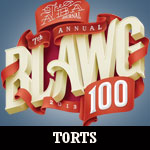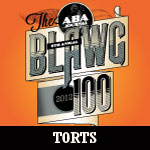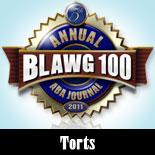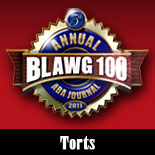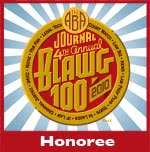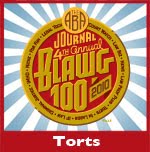Today, Abnormal Use continues its series, “Abnormal Interviews,” in which this site will conduct brief interviews with law professors, practitioners, and other commentators in the field. For the latest installment, we turn to law professor William M. Janssen of the Charleston School of Law in Charleston, South Carolina. The interview is as follows:
1. What is the most significant new development in South Carolina products liability law in recent years? What about in the regulation of medical devices?
Products liability law continues, nationally, to be a discipline in great flux, and the list of “significant new developments” could be a really lengthy one. To my eye, among the top candidates for this distinction are the following six:
A. Branham v. Ford Motor Company (S.C. S.Ct. 2010): The decision to reformulate our products design defect theory from a consumer-expectations/risk-utility composite into a far more predictable RAD-based risk-utility model has added great clarity to this realm of local products theory. Now, the pleading and proof expectations for this theory are fixed: a claimant must demonstrate the presence of a feasible alternative design (which, we’re now instructed, installs an inquiry that evaluates “cost, safety and functionality”), and then show how this alternative design “would have prevented the product from being unreasonably dangerous.” This reformulated approach to testing for design defectiveness adds clarity and more guided decision-making to what is otherwise a nearly boundlessly subjective undertaking.
B. State v. NV Sumatra Tobacco Trading Company (S.C. S.Ct. 2008): In this decision, our Supreme Court took sides in the great O’Connor/Brennan Asahi stream-of-commerce debate over the proper boundary-line set by the Due Process Clause in “stream”-based personal jurisdiction contests. As “stream” theory will frequently (nearly always?) involve a products claim, settling this core inquiry over the reach of judicial power is critically useful. By my reading, our Supreme Court took us even further than Justice Brennan had envisioned in Asahi. Our Court reasoned that “simply placing a product into the stream of commerce is consistent with the Due Process Clause,” thereby satisfying the constitutional prescription placed on the exercise of personal jurisdiction over nonresidents. (Sumatra Tobacco, Fn. 5) [By comparison, Justice Brennan had qualified his view with the admonition that the Due Process Clause would be satisfied in “stream” cases “[a]s long as a participant in this process is aware that the final product is being marketed in the forum State.” If our Supreme Court’s unqualified “stream” approach is applied literally, it would not matter whether Sumatra Tobacco knew that its cigarettes were being marketed in South Carolina or not – arguably, a much broader approach to the Due Process Clause than Justice Brennan had advocated.] With the Court again brutally fractured two terms ago in J. McIntyre Machinery v. Nicastro, the prospects for a decisive ruling from Washington that could supplant Sumatra Tobacco now seem dim.
C. Twiqbal (U.S. S.Ct. 2007 & 2009): More below.
D. Federal Preemption: The uncertainties in the evolving landscape of federal preemption theory are hard to overstate. In Buckman (2001) and Geier (2000), the U.S. Supreme Court seemed poised to give federal preemption theory a broad and sweeping application that would compromise broad swaths of run-of-the-mill products claims in prescription-only cases. The Court seemed to retrench meaningfully in Lohr (1996) and Wyeth v. Levine (2009), only to then press out again in Riegel (2008) and Bartlett (2013). All told, the federal preemption story is a byzantine one of 5-4 decisions, blistering dissents, and shifting majorities. For litigants in prescription drug and device product cases, federal preemption remains a fundamentally unstable area of constitutional law.
E. Off-Label Prescription Drug/Device Promotion and the First Amendment: The federal government and its principal drug and device regulator, FDA, have insisted that aggressively policing the off-label promotion border is critically important in safeguarding the new-drug and new-device approval process deemed essential to a safe pharmaceutical and medical device marketplace. The Supreme Court’s recent decision in Sorrell v. IMS Health (2011) and the Second Circuit’s long-awaited opinion in United States v. Caronia (2012) raise the specter that the Free Speech Clause may have an important role to play in the scope of regulation of off-label promotion. Both decisions intimate that a manufacturer, promoting off-label in a manner that is indisputably truthful and non-misleading, may find a constitutional vanguard against both criminal and civil liability. The consequences of such an outcome, caution FDA, could decimate the agency’s continued effectiveness in protecting our drug and device supply. The final battle in this war is yet to come.
F. S.C. Rule of Civil Procedure 30(j) (2000): In promulgating Rule 30(j), our Supreme Court noted that it was requiring “attorneys in South Carolina to operate under one of the most sweeping and comprehensive rules on deposition conduct in the nation.” The Rule has lived up to the billing. Products litigations are very discovery-laden enterprises, and the restrictions imposed on attorney behavior by Rule 30(j) certainly impact the reach and practice of deposition discovery in our State. Because depositions are the most agile and unpredictable of all discovery tools, the substantial constraints on defensive lawyering imposed by Rule 30(j) qualifies, by any measure, as one of the “significant new developments” in our discipline.
2. How has the evolving Twiqbal jurisprudence affected the litigation of mass tort or mass pharmaceutical cases?
A growing body of data suggests that in employment discrimination, civil rights, and pro se cases, Twiqbal may be having a statistically significant impact in removing cases from the federal docket prior to the filing of an answer and the pursuit of discovery. Opinions vary on whether this pre-answer culling is something to be cursed or cheered. A few years back, I conducted an industry-targeted study on the effect of Twiqbal on pharmaceutical and medical device litigation. (71 La. L. Rev. 541). My conclusions were mixed. In studying 264 drug and device cases released over 15 months post-Iqbal, I found that nearly 80 percent of the time, Twiqbal had no perceivable decisional impact on whether a drug or device pleading survived or failed. By 20 percent is still a large number, and in those cases, I could not conclude with any confidence that Twiqbal had played no role in the outcome. That said, it remained unclear to me following this study whether it was the “plausibility” requirement of Twiqbal that was principally influential, or merely the “no-conclusions” requirement of Twiqbal. If the latter (as I suspect, in many cases, it was), that portion of the Twiqbal approach added nothing, in truth, that was particularly new or different than the incumbent pleading-testing approaches of each of the Nation’s federal circuits. Nonetheless, whether one perceives great change or modest change in Twiqbal, there is little question but that it has added a good deal of uncertainty to the pleadings stage of federal litigation, and is likely incentivizing great factual enhancement by federal pleaders.
3. What is the biggest challenge for lawyers practicing in the products liability field today? What advice would you give?
Our discipline is one marked by great change today. Perhaps the biggest challenge for any products lawyer today is simply keeping up with the profound and continuing fluctuations in the substantive law we confront and the procedures through which we confront them. Without question, the consequences of these changes can be dramatic and dispositive. Twiqbal and federal preemption can be courthouse door-closers. The new Branham approach to product design theory imposes enhanced burdens on plaintiffs and offers fresh vulnerabilities to defendants. The thought that the Constitution’s free speech protections could impact products cases raise an entirely new and generally unexplored frontier. This is an exciting time to be a products lawyer. My advice? Simplistic as it may sound, perhaps the product lawyer’s greatest challenge today is just keeping abreast of change.
4. Generally, how would you characterize the media coverage of products liability issues?
It’s a mixed bag, in my view. Industry-specific media sources (like BNA specialty reporters or Law360) seem to do a laudable job of capturing nuances and practical meaning in major case law and legislative developments. While I might take issue with a particular comment or critique in those sorts of sources, I find that, by and large, their work is fairly sophisticated (considering time and space constraints), and valuable to the practitioner. The mass media is, predictably, a horse of a different color. Their target audience is not the products lawyer or industry participant, but the daily news reader. Sophistication, nuance, and reliable interpretation all suffer. In that environment, “sound-bites” seem often to trump content.
BONUS QUESTION: Favorite pop culture lawyer?
It’s a retold answer for sure, but Vinny Gambini (My Cousin Vinny) is the hands-down pick for me. If you pressed me for a more obscure choice, I’d go with Rudy Baylor in The Rainmaker. I think Grisham wove an entertaining David-versus-Goliath tale, with a good number of “teachable” moments that I use with great effect in class.
BIOGRAPHY: William M. Janssen joined the Charleston School of Law faculty in 2006 after a lengthy practice with the mid-Atlantic law firm of Saul Ewing LLP, where he was a litigation partner, a member of the firm’s seven-person governing executive committee, and chair of the interdisciplinary Life Sciences Practice Group. He concentrated his practice in pharmaceutical, medical device, and mass torts defense and risk containment. In practice, he was involved in several high-profile drug and device cases, including the national diet drug (“fen-phen”) litigations, DES litigations, and myelographic contrast dye litigations. He has spoken and written extensively on pharmaceutical and medical device law.





